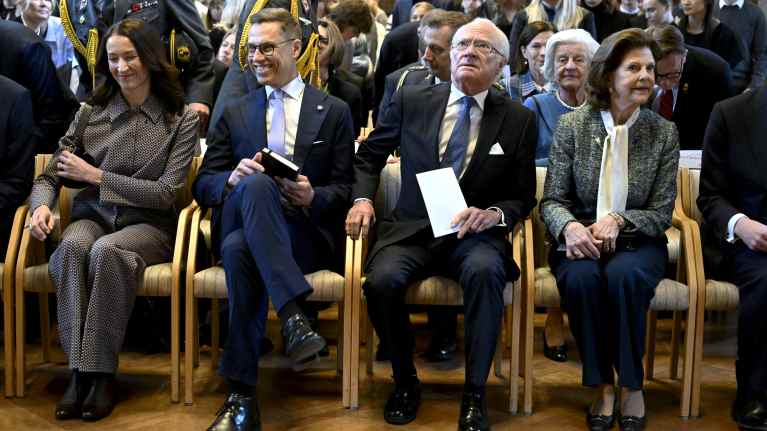Helsingin Sanomat takes a look at the foreign and security policy context in which Finnish President Alexander Stubb and First Lady Suzanne Innes-Stubb made their first state visit to Sweden this week.
The paper said that their visit showcased a symbolic unity between the Nordic countries, marked by shared gestures of friendship and stylish appearances.
Amidst these lighter moments, serious discussions underscored the visit, particularly focused on the implications of Finland and Sweden's recent accession into Nato.
Stubb highlighted the evolution of Finland-Sweden relations in the context of their Nato alliance, suggesting Finland may have taken a lead in the accession process.
This notion was exemplified during their visit to Gothenburg’s port and the Älvsborg Regiment, which Helsingin Sanomat pointed out as critical for Nordic security and particularly vital for Finland in a potential crisis situation.
Additionally, the paper noted that Sweden's defence policies have changed dramatically in recent years, citing the Älvsborg Regiment as one such case. For 15 years, the Regiment was defunct, before being reconstituted and rearmed in 2021 to defend the largest port in the Nordic region.
The visit comes as Sweden makes significant increases to its defence budget, aiming to meet Natos target of spending two percent of GDP on defence this year, with further potential increases hinted at by Defence Minister Pål Jonsson.
HS wrote that Sweden taking its defence seriously is essential for Finland, particularly in the aftermath of Russia's invasion of Ukraine two years ago.
Winter finally giving way (allegedly)
Newspaper Iltalehti carried good news in the wake of a late-April snowstorm that hit Finland earlier this week.
According to Foreca's most recent forecast, the mercury in the thermometer will spike to 15-20 degrees Celsius during the May Day holiday week, and in southern Finland to over 20 degrees in some places.
"If the forecast comes true, it will be a warm week in the south. In the north, however, it could be even cooler than usual," said Foreca meteorologist Joonas Koskela.
Next Tuesday (May Day Eve) is likely to be a mostly clear day, Koskela said.
Sunshine will be seen especially in the southern and central parts of the country and in the northern half of Lapland.
"In the sunny areas of southern and central Finland, temperatures could be as high as 15-20 degrees Celsius, in the south perhaps as high as 21 degrees in places, while in the cloudy areas of Lapland temperatures could still be in the low single digits and in the sunny areas around 10 degrees Celsius. Cloudy areas in the central part of the country can also stay around 10 degrees," Koskela said.
However, Koskela reminded revellers that temperatures will drop sharply during the evening and night, especially in the south.
"Even in the south it will be around 10 degrees in the evening and 5 degrees at night," he said, urging those participating in the festivities to bring a jacket.
Potato tips
Rural-focused newspaper Maaseudun Tulevaisuus ran an article full of tips on growing the best potatoes in time for Midsummer.
When it comes to staple home gardening crops in Finland, perhaps none is more romantically idolised than the humble potato.
So if you happen to have a red house and a potato patch or even just a small box set aside on your apartment balcony, MT recommended that it's a good idea to first let the seed potatoes sprout in a cool, bright place as early as April.
The taters should sprout at temperatures between 10 and 12 degrees Celsius for three to four weeks. The sprouted potatoes can then be planted once the soil has dried out and warmed up a little.
MT noted that the rule of thumb for planting spuds is a soil temperature of 8 degrees.
As for the ideal growing location the newspaper recommended a warm south- or west-facing slope, where the soil is sandy or has clay. However, if the soil is too sandy, potatoes are vulnerable to summer heat, while too much clay retains too much moisture and keeps the soil cold.
MT also warned against using too much nitrogen-based fertiliser, which could leave the soil too wet. In dry summers though, this can be a quick fix. Compost, manure and ash also help potato patches flourish.
After about two months, the first crop of home-grown summer potatoes will be ready to harvest.
Users with an Yle ID can leave comments on our news stories. You can create your Yle ID via this link. Our guidelines on commenting and moderation are explained here.
